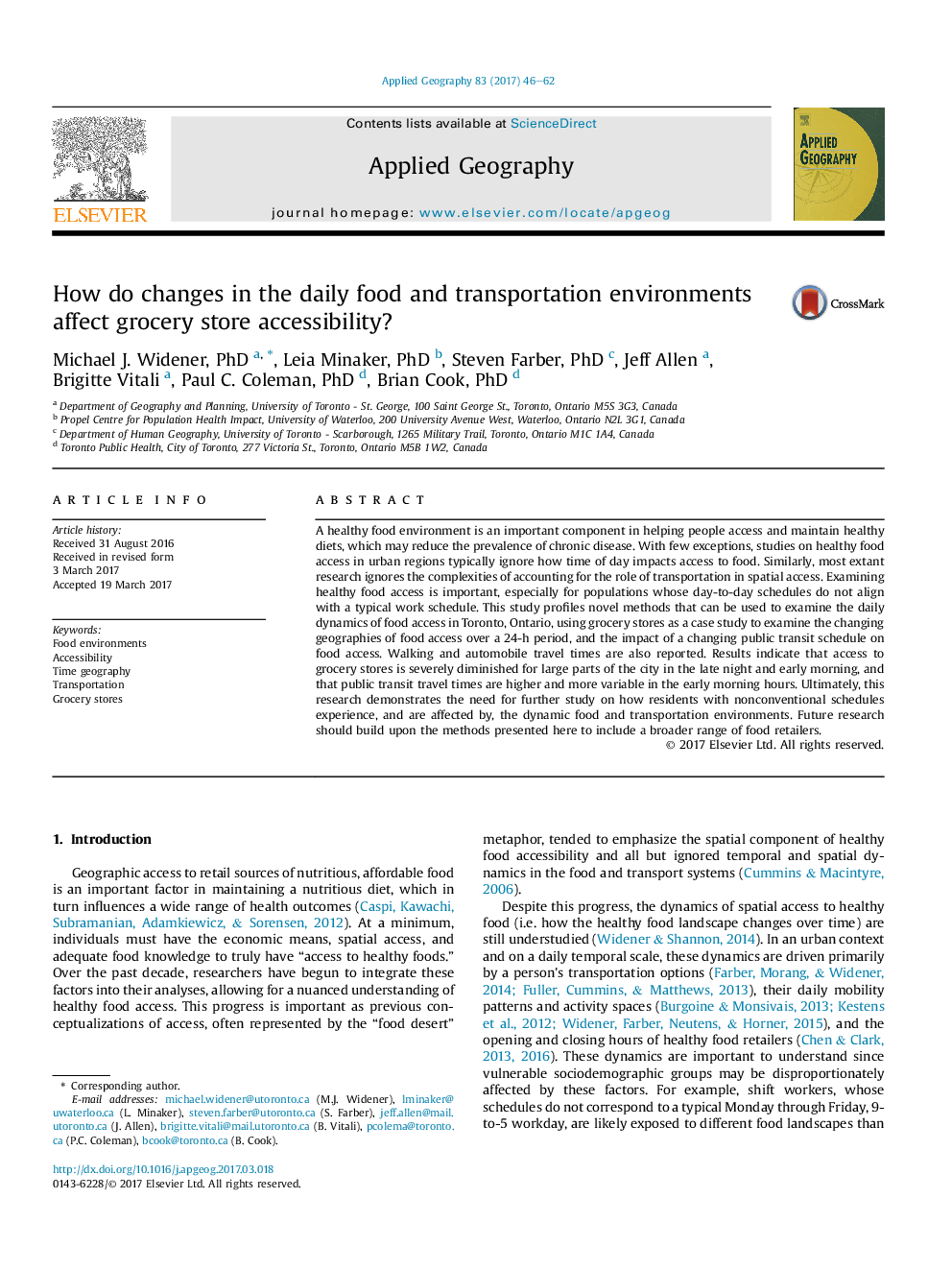| Article ID | Journal | Published Year | Pages | File Type |
|---|---|---|---|---|
| 4759036 | Applied Geography | 2017 | 17 Pages |
Abstract
A healthy food environment is an important component in helping people access and maintain healthy diets, which may reduce the prevalence of chronic disease. With few exceptions, studies on healthy food access in urban regions typically ignore how time of day impacts access to food. Similarly, most extant research ignores the complexities of accounting for the role of transportation in spatial access. Examining healthy food access is important, especially for populations whose day-to-day schedules do not align with a typical work schedule. This study profiles novel methods that can be used to examine the daily dynamics of food access in Toronto, Ontario, using grocery stores as a case study to examine the changing geographies of food access over a 24-h period, and the impact of a changing public transit schedule on food access. Walking and automobile travel times are also reported. Results indicate that access to grocery stores is severely diminished for large parts of the city in the late night and early morning, and that public transit travel times are higher and more variable in the early morning hours. Ultimately, this research demonstrates the need for further study on how residents with nonconventional schedules experience, and are affected by, the dynamic food and transportation environments. Future research should build upon the methods presented here to include a broader range of food retailers.
Related Topics
Life Sciences
Agricultural and Biological Sciences
Forestry
Authors
Michael J. PhD, Leia PhD, Steven PhD, Jeff Allen, Brigitte Vitali, Paul C. PhD, Brian PhD,
